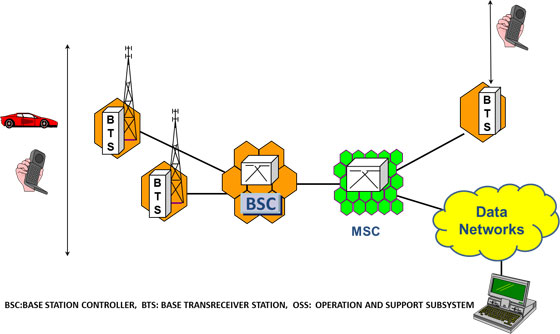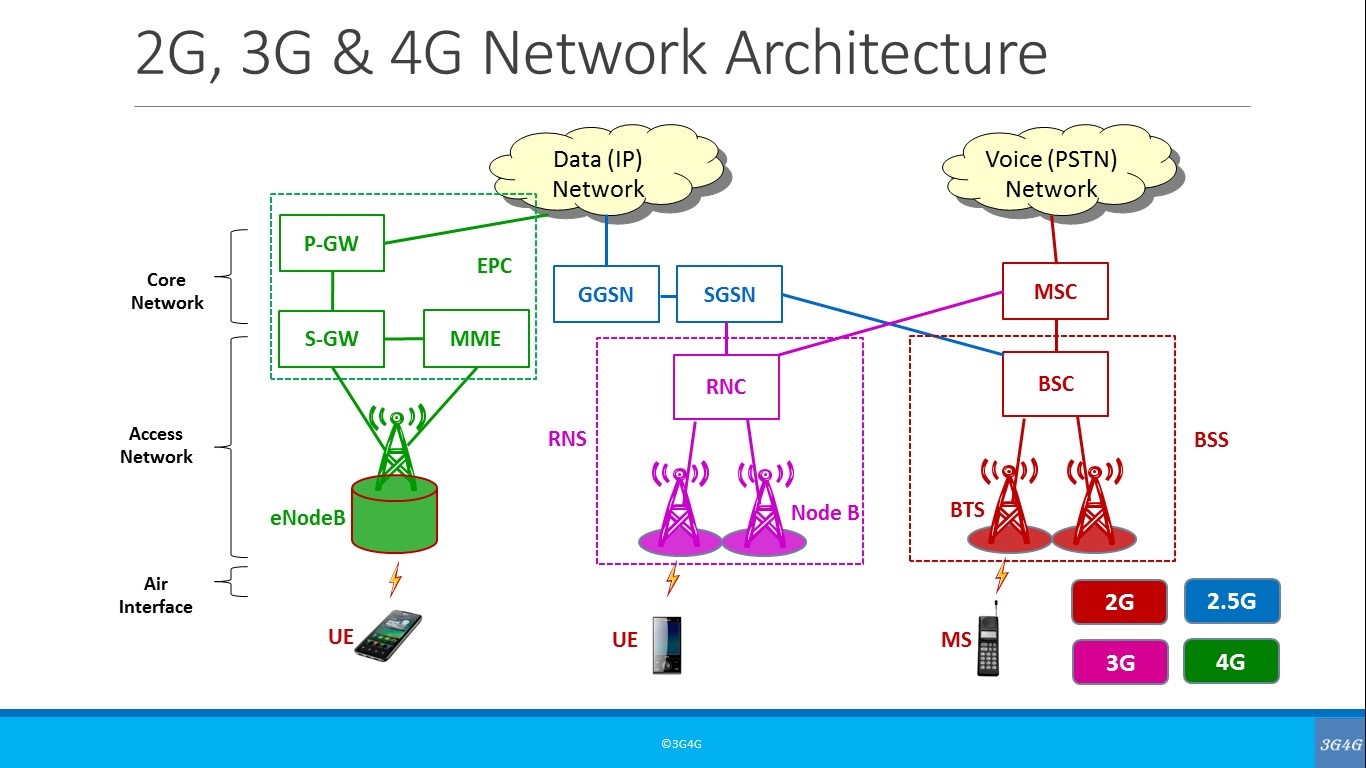A cell phone is nothing more than a radio. It is a complex radio, but still a radio. In order to really understand the way a cell phone works, we must discuss some of the cell phones history for just a moment.
Back around the early 1950s', mobile-radio-phones were about as common as cruise control in post- World War II cars.
In select urban areas, there were large, central antennas that were specifically allocated for these radio-phones. Each car that had a radio-phone required a big antenna that could transmit at least 40 or 50 miles. Since radio technology itself was only in the building phase, only about 25 channels were available for private use. So basically only 25 people could be talking on their radio-phones at the same time.
The solution to this problem was to divide each city up into small divisions, or "cells". The technology behind cells have changed dramatically over the years, just as cell phones have, but now most standard cells are about 10 square miles large. They are usually in the shape of a hexagon. Nowadays, every individual cell has its own base station, rather than only one for an entire city.
And now cell phones are made to be low-power transmitters (either 0.3 watts or 6 watts), which is much lower wattage than in past decades. This means that the same frequency can be used in the same city, at the same time, but in different cells.
Not much has changed since then and the basic cellular infrastructure / architecture remain the same. It is essentially a the areas which is divided into cells , services and connected to each other by collection of transceivers, controllers, switches, routers, and registers. Some of the main components and how it works is provided below ;

Mobile Equipment (ME) –
This refers to the physical phone itself. The phone must be able to operate on a cellular network. Older phones operated on a single band only. Newer phones are dual-band, triple-band, and even quad-band capable. A quad-band phone has the technical capability to operate on any network worldwide.
Each phone is uniquely identified by the International Mobile Equipment Identity (IMEI) number. This number is burned into the phone by the manufacturer. The IMEI can usually be found by removing the battery of the phone and reading the panel in the battery well.
Base Transceiver Station (BTS) – It is actually the antenna that you see installed on top of the tower. The BTS is the Mobile Phone’s access point to the network. It is responsible for carrying out radio communications between the network and the Mobile Phone. It handles speech encoding, encryption, multiplexing (TDMA), and modulation/demodulation of the radio signals. One BTS usually covers a single 120 degree sector of an area. Usually a tower with 3 BTSs will accommodate all 360 degrees around the tower. However, depending on geography and user demand of an area, a cell may be divided up into one or two sectors, or a cell may be serviced by several BTSs with redundant sector coverage. A BTS is assigned a Cell Identity. The cell identity denotes a particular Location Area, which provides details of the cell which the BTS is covering.
What is a Cell – A base station (transmitter) having a number of RF channels is called a cell. Each cell covers a limited number of mobile subscribers within the cell boundaries (Coverage area). Approximately a Cell Radius is 30 Km , (Start up), 1 KM (Mature) .
Cell Size and Capacity – Cell size determines number of cells available to cover geographic area and (with frequency reuse) the total capacity available to all users. Capacity within cell limited by available bandwidth and operational requirements. Each network operator has to size cells to handle expected traffic demand
Base Station Controller (BSC) – The BSC controls multiple BTSs. It handles allocation of radio channels, frequency administration, power and signal measurements from the MS, and handovers from one BTS to another (if both BTSs are controlled by the same BSC). A BSC also functions as a "funneler". It reduces the number of connections to the Mobile Switching Center (MSC) and allows for higher capacity connections to the MSC. A BSC may be collocated with a BTS or it may be geographically separate. It may even be collocated with the Mobile Switching Center (MSC)
Mobile Switching Center (MSC) – The MSC is the heart of the GSM network. It handles call routing, call setup, and basic switching functions. An MSC handles multiple BSCs and also interfaces with other MSC's and registers. It also handles inter-BSC handoffs as well as coordinates with other MSC's for inter-MSC handoffs.
Government Of Odisha Electronics and Information Technology Department
"Telecommunication", the subject which includes, telephones, wireless, data and telematics services is a Central subject under Ministry of Communication, Govt. of India.It is a well known fact that the Telecom sector has a multiplier impact on the economy, contributes to economic growth and the GDP.
Download
The architecture of different generations of mobile cellular technology from 2G to 4G. The core technologies have moved from circuit-switching to the all-IP evolved packet core (moving right to left).
The high-level network architecture of LTE is comprised of following three main components:
1. The User Equipment (UE).
2.The Evolved UMTS Terrestrial Radio Access Network (E-UTRAN).
3. The Evolved Packet Core (EPC).
The evolved packet core communicates with packet data networks in the outside world such as the internet, private corporate networks or the IP multimedia subsystem.
